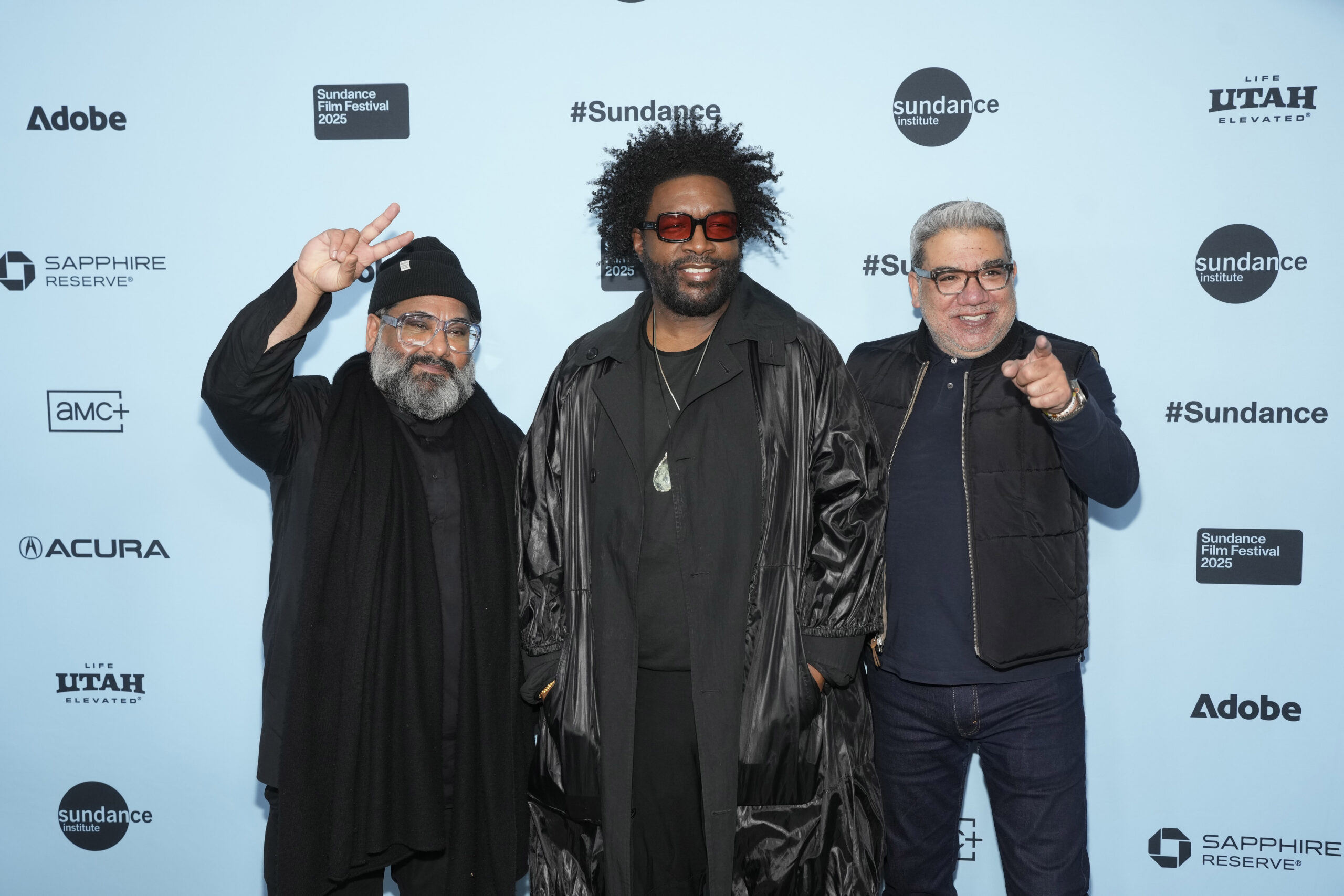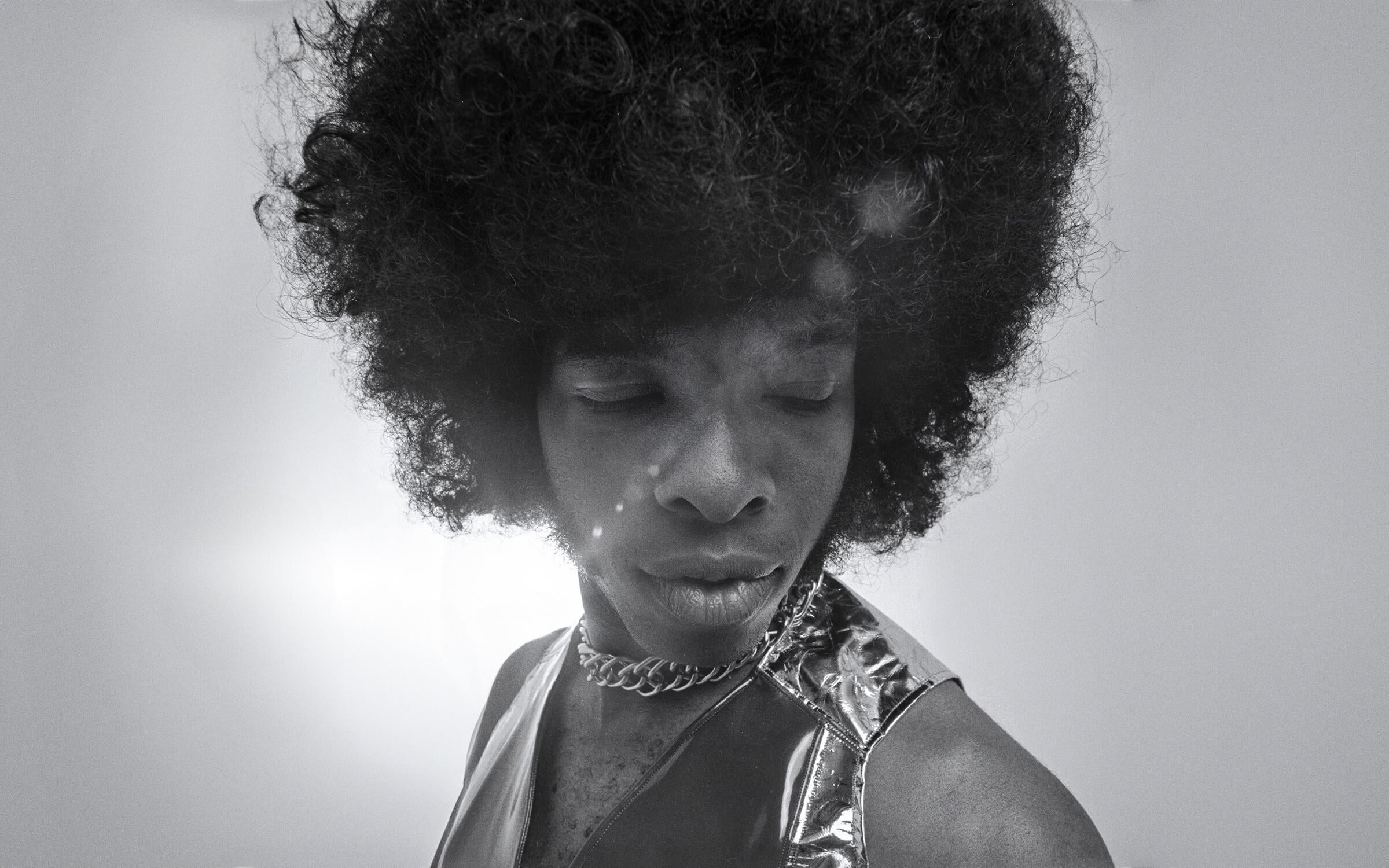Sly and the Family Stone was one of the most inventive bands from the late 1960s and 70s. We grew up with songs like “Everyday People,” “Dance to the Music” and “I Want to Take You Higher.”
When WPR’s “BETA” heard about the film documentary, “SLY LIVES! (aka The Burden of Black Genius),” we wanted to know more. We sat down with Joseph Patel, the film’s producer, to find out what inspired the making of this documentary.
This interview has been edited for brevity and clarity.
Stay informed on the latest news
Sign up for WPR’s email newsletter.
Steve Gotcher: Let’s start with the film’s title, “SLY LIVES! (aka The Burden of Black Genius).” Early in the movie, everyone from D’Angelo and Andre 3000 to Jimmy Jam and Terry Lewis is asked what “Black genius” is and if they feel a burden is attached. What sorts of answers did you get?
Joseph Patel: There are two parts to the title. There’s “Sly Lives,” which is about the fact that Sly is still with us. Sometimes, we tend to appreciate artists only after they’ve passed. So that’s that part of the title.
And then there’s this idea that Questlove has grappled with the last few years, about the burden of Black genius. When Questlove and I sat down to map out the story, the idea was that, if you trace it back, Sly was one of the first artists, if not the first post-civil rights Black artist, to struggle with the uniquely American success that Black artists experience, right? He was the first post-civil rights era Black superstar with as big of a white audience as he did a Black one. What that must have done to Sly.
In a perfect world, I think we would have loved to have talked to Sly Stone himself. Even though he’s still alive, he’s not healthy enough to give interviews or to be on camera. But we could talk to D’Angelo, Andre 3000, Chaka Khan and George Clinton — artists that are sort of proxies for Sly. They’ve gone through some of the same experiences that Sly has gone through.
With that being our approach, it opens with the question, what is Black genius? And ostensibly, the film is the answer to that question. Sly is a look at Black genius. Then it ends with, is there a burden to Black genius? But we don’t answer it in the film. Everyone has their own answers. So that’s the framework of the question and how the film deals with it.
SG: Let’s talk about Sly’s early life. He was born Sylvester Stewart. How did he get his start in music?
JP: Sly grew up in Denton, Texas, until his family moved to Vallejo, California, to seek better opportunities. Sly was raised in the church, and music was a thing he gravitated to early. The first known recording of Sly is from a group called the Stuart Four, which is him and his siblings doing a church song.
For many Black musicians, the church is where you learn everything about music. I think what distinguished Sly is that he didn’t just listen to one type of music. He was intrigued by it all. Secondly, he had the opportunity to be exposed to it all in the Bay Area.
Ahmir [Questlove] and I were having this conversation: If Sly never moves to California, will Sly and the Family Stone ever get started? Or are they the same band? And I think the answer to that is probably no. San Francisco allowed him to be exposed to different types of music. And when he started songwriting and producing, he worked with various kinds of artists from different genres. That’s the secret sauce for Sly and the Family Stone’s success.
As a teenager, he writes songs for other artists. He’s producing records for this independent label called Autumn Records. He’s on the radio as a DJ, playing all types of music. He’s leading a house band at a local music venue, and he’s the backing band for several artists that come through the Bay Area. So he had this opportunity to follow his curiosity and interests, no matter what genre of music they emerged from.

SG: When Sly and the Family Stone came together as a band, the lineup was unique for that era, with men and women and Black and white mixed. How did that affect their music, and how did it compare to other pop music of that time?
JP: If you’re putting a band together to play music that doesn’t subscribe to one genre but instead merges several of them, you probably need a band to reflect that. I think that’s perhaps what Sly was thinking to some extent. Half the band is family. His brother, Freddie, is on guitar; a woman he grew up with as a kid, Cynthia Robinson, who plays trumpet; and Jerry Martini, the sax player; Greg Errico, who I think was 16 or 17 when the band was formed, is the drummer.
I think part of what Sly’s thinking is: If I’m going to play music that looks like the future, maybe I need a band to put a band together that also reflects the future. If you’re a young person in 1967 and seeing Sly and the Family Stone for the first time, they probably look like aliens because bands are not integrated like that. There aren’t women in the bands along with the men.
SG: By 1971, the wheels started coming off for Sly, and things were not going well. What happened?
JP: We wanted to tell his story with empathy and not rob him of his agency. Sly made these decisions in his life. He chose to do drugs and abuse them and alcohol. He decided to create toxic relationships with his bandmates, with lovers and with his family. There’s a point where the drugs stopped being fun and they became a crutch.
Imagine being 26 years old, you’ve just headlined Woodstock and you have this series of hit singles where everybody, Black and white, looks to you like you’ve solved race relations through your music. You’re on the cover of Rolling Stone, and everyone’s like, what’s next?
Our film asks — with no template to follow, no one to consult, and no map in front of you — what do you do as a Black artist? Our theory is that, sometimes, you feel a bit of guilt, anxiety and fear. And that causes you to hide behind things like drugs and alcohol.
I think that’s what happened with Sly. I think he started to hide behind the false sense of security that drugs might provide. He began to create toxic relationships around him. We didn’t want to paint Sly as a victim. He had a role in this.

SG: His songs have been sampled countless times by artists like George Clinton, Jimmy Jam and Terry Lewis, Andre 3000, Q-Tip, Nile Rodgers and D’Angelo. And they all talk about their reverence for him in the film. What do you think his legacy and influence look like to you?
JP: Sly directly impacted or influenced everyone we talked to in the movie. We felt, what better way to describe why Sly’s a genius than by Jimmy Jam, Terry Lewis and Nile Rodgers, some of the most prolific songwriters we’ve ever had on this planet?
They heard Sly and were influenced by Sly to do what they do, and they found great success in that pursuit. But they can also speak to the burdens of success for them.
SG: What, in your opinion, do you want people to get from this film?
JP: We want people to understand that the artists we love and revere have given us so much, and we need to show them a little grace. We need to show them the grace to allow them to be who they are, not put any demands on them and not inflict our judgment or needs on them.
Vernon Reid has a monologue that closes the film where he says Sly has given us so much, and we owe so much more to him than he owes to us. I think that’s the point of the film.
Ahmir has this thing where he feels like Black artists need to be superhuman for them to be seen. His whole thing is we just want to be normal. The feeling that we want people to leave the movie with is to have some empathy and some grace for the artists who give us so much.




